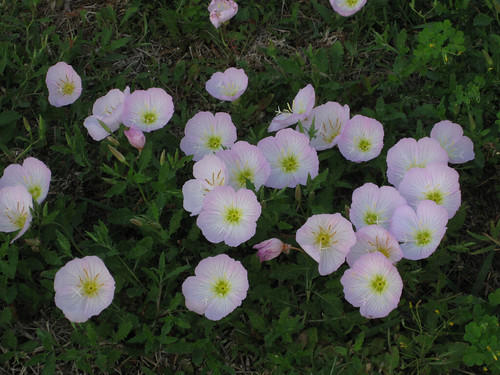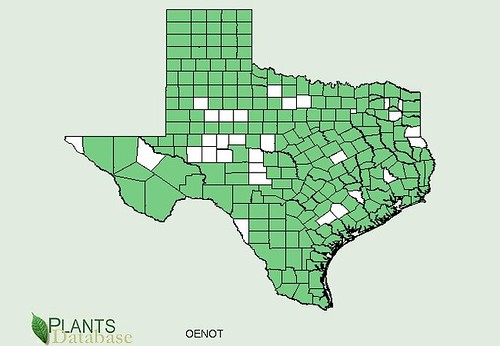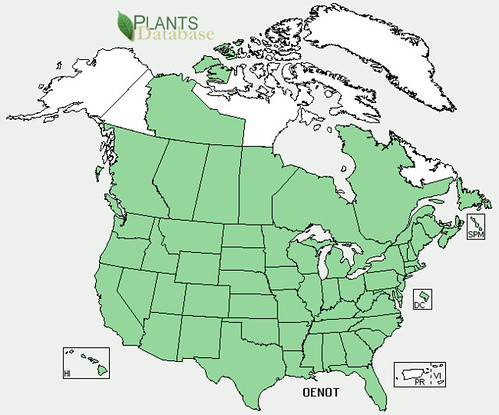Abundance: common
What: young leaves, flowers
How: petals raw; young leaves (before flowers appear) raw or boiled
Where: yards, sunny
When: spring, early summer, summer
Nutritional Value: Vitamin F, some fatty acids
Dangers: Eating large quantities of these flowers may cause stomach distress.
Pink Primrose weeds

Pink Primrose flower

Pink Primrose leaves

Texas distribution, attributed to U. S. Department of Agriculture. The marked counties are guidelines only. Plants may appear in other counties, especially if used in landscaping.

North American distribution, attributed to U. S. Department of Agriculture.

Bringing a spray of pink to yards and field, these flowers begin appearing in later winter and continue on through into early summer. The young leaves of the pink primrose are edible before the plant flowers. Luckily they mature in a staggered time so young leaves can be found among plants already in flower. The flowers themselves are eaten raw or as added color to salads but start with just a few as some people have an allergic reaction to them.
Buy my book! Outdoor Adventure Guides Foraging covers 70 of North America's tastiest and easy to find wild edibles shown with the same big pictures as here on the Foraging Texas website.

